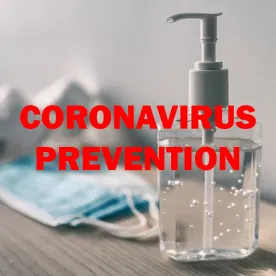With new unemployment claims mounting at historic rates, and large sectors of the economy still idled by government mandates and business necessity, federal, state and local policymakers have turned their attention to restarting the U.S. economy. President Donald Trump and the Centers for Disease Control and Prevention (CDC) jointly announced multi-phased guidelines for reopening America. Similarly, Wisconsin released its multi-phased Badger Bounce Back plan, which has since been modified by this week’s Emergency Order #34, Interim Order to Turn the Dial. In each case, government leaders anticipate a progressive and incremental reopening of the economy, subject to certain benchmarks relating to the prevalence of the 2019 novel coronavirus (COVID-19) and the government’s ability to minimize community spread.
While timelines for resuming business activity remain fluid, it is clear that employers will be expected to bring employees back to work in the midst of an ongoing pandemic, a novel challenge for most U.S. employers. On top of it all, the rapid-fire publication of new emergency rules, regulations and recommendations has made workplace safety planning feel like an insurmountable task.
The following five steps provide a basic roadmap to help employers navigate the workplace safety challenges presented by the COVID-19 pandemic:
1. IDENTIFY KEY SAFETY AUTHORITIES AND FORMALIZE A SCHEDULE TO REGULARLY REVIEW APPLICABLE GUIDANCE
The current onslaught of workplace safety guidance is daunting, even for experienced health and safety practitioners. While most employers realize that the Occupational Safety and Health Administration (OSHA), or its state equivalent in some jurisdictions, plays a critical role in regulating workplace safety, OSHA is not the lone regulatory voice publishing best practices during this pandemic. The World Health Organization (WHO), CDC, and state and local public health departments, among others, are pushing out new information and recommendations almost daily. However, it’s important to recognize that not all guidance is created equal and some government agencies lack enforcement power to mandate employer compliance.
As an employer, the first order of business should be determining which federal, state and local rules you must follow, and refreshing your knowledge of the risks and consequences arising from any compliance failures. Keep in mind that in many instances state and local rules may be more stringent than federal law. Wisconsin is a perfect example. While Emergency Order #28, Safer at Home Order remains in place, essential businesses can only bring back employees on premises who are strictly necessary to perform essential operations. This requirement has a direct impact on how employers plan to bring employees back from furlough and comply with COVID-19 safety guidance.
To get familiar with the safety authorities and review applicable guidance, the following resources are a good place for all employers to start:
Wisconsin employers should also consider these resources:
After identifying key enforcement agencies and regulations, employers should establish a point person and regular time interval to review applicable agency guidance for updates. The regulatory response to the pandemic has been and remains extremely dynamic, which means that compliance efforts must be dynamic as well. If in doubt about your obligations, it’s always best to consult experienced legal counsel.
2. ASSESS COVID-19-RELATED RISKS AND SPECIFIC HAZARDS FACING EMPLOYEES IN YOUR WORKPLACE
While some workplace safety precautions are universal, other measures vary based on your workforce’s risk level. Once you have a clear understanding of your compliance requirements, evaluate your workplace to determine the specific occupational COVID-19 exposure risks facing each of your employees.
Your risk analysis will dictate the degree to which you must implement various workplace controls to mitigate COVID-19 threats. To assist with this analysis, OSHA has released general guidance, which divides job tasks into four risk exposure levels. However, employers should not limit their risk analysis to a rote application of OSHA’s risk exposure pyramid. Rather, employers must carefully review the facts and circumstances of each employee’s role within their work environments. This analysis should include an internal assessment as to whether third-party assistance is required.
Keep in mind, whether or not you formalize a COVID-19 response plan, all employers are required to conduct a hazard assessment to determine if COVID-19 presents a workplace hazard and if additional personal protective equipment is required.
3. PREPARE A COVID-19 RESPONSE PLAN
If you have not done so already, now is the time to develop and implement a written response plan. Developing a written response plan is consistent with OSHA’s workplace recommendations and will help you identify gaps in your safety protocols and anticipate situational employee issues that might arise. For example, a response plan should outline how to respond if someone feels ill, displays COVID-19 symptoms, tests positive for COVID-19, lives with someone who tests positive for COVID-19 or commutes from an area known to be a hotspot for community-spread.
Establishing written protocols to guide your workplace response will enable to you navigate COVID-19 employee issues in a process-driven, non-discriminatory manner. Your plan should be based on and incorporate safety obligations under federal, state and local law. Notably, if your workplace is subject to an OSHA inspection in response to a COVID-19 complaint, OSHA’s COVID-19 enforcement guidance advises that a response plan is among the documents an OSHA officer will be seeking for review.
When drafting your response plan, be mindful of differences in the recommendations and requirements at various levels of government and be sure to look first to applicable guidance that carries enforcement consequences for your business. For example, Wisconsin's requirement for persons who have had close contact with a confirmed or suspected COVID-19 case is a 14-day quarantine at home, while CDC guidance allows for certain asymptomatic workers to return to work following a potential exposure.
OSHA enforcement guidance suggests that employers designate one person to serve as the workplace COVID-19 coordinator to manage implementation of the response plan and address employee concerns. Some employers have also had success designating and training additional employees to serve as workplace observers. Workplace observers can work closely with your workplace coordinator to ensure COVID-19 response plan directives for employees are followed consistently. They can also be a voice that provides suggestions or modifications to the safety plan and protocols. This added layer of safety can provide much needed assurances to employees returning to the workplace, and also allows employees to focus on getting the work done without worrying about policing colleagues.
4. COMMUNICATE YOUR RESPONSE PLAN AND SAFETY EXPECTATIONS TO EMPLOYEES
Ongoing, regular communication with your employees regarding your COVID-19 response plan is absolutely critical to ensuring a safe work environment. Many of the workplace controls necessary for mitigating against the risk of workplace exposure require employee cooperation and affirmative participation Your workplace is only as safe as your workforce’s willingness to comply with your workplace controls and identify COVID-19 symptoms or potential exposures. Seeking your employees’ active investment in your safety planning will not only minimize the safety risks posed by COVID-19, but also engender their appreciation and cooperation in executing your response plan.
Some employers have had success providing regular, weekly updates to active employees on the steps taken and successes achieved from a safety standpoint, taking the opportunity to adjust procedures as needed. It is also advisable to communicate the safety steps you have taken to date when welcoming back employees returning from furlough or other types of leave.
Importantly, fostering open lines of communication regarding your safety response to COVID-19 may reduce the likelihood that your employees seek to remedy perceived safety deficiencies through external complaints.
5. TRAIN MANAGERS AND SUPERVISORS TO IMPLEMENT AND EXECUTE YOUR RESPONSE PLAN
The direction, guidance and training you provide to supervisors and managers is also critical to ensuring a safe workplace when employees return. Managers and supervisors should not only be well-versed in the specific requirements of your response plan, but also in how they are expected to approach novel issues and circumstances outside of your plan. Many employees are currently experiencing heightened fears and anxieties about the coronavirus and its related economic disruption. These anxieties, together with a dynamic regulatory environment, make workplace disputes related to the coronavirus especially ripe for potential liability and litigation.
Managers and supervisors should train their teams on the response plan and protocols in a consistent manner immediately upon the employees’ return to work. The workplace COVID-19 coordinator should provide talking points to managers and supervisors on the general protocols, and help customize them for specific departments.
To ensure that COVID-19-related complaints and/or disciplinary actions are handled appropriately, consider requiring managers and supervisors to elevate these matters. Employers who act too swiftly, without fully vetting the consequences of their decisions, might unknowingly walk into employment claims for discrimination, retaliation, interference with employee benefit entitlements and violations of public policy. Consult with legal counsel, as needed, to work through unique issues that arise.





 />i
/>i
